Introduction
First, let me tell you what Watt is. It is the amount of power consumed by an electrical device. In the context of red light therapy, it simply means the intensity of light emitted from the device.
When shopping for Red light therapy panels, wattage is an important factor to consider. The market is more flooded than ever with choices in red light therapy LED panels. Nowadays, a lot of misinformation is floating around about red light wattage. And that's where you get confused whether you should get a device with lower or higher wattage.
Many companies claim to use higher wattage LED bulbs in their devices that give better therapeutic results. However, the problem is that higher wattage LEDs don't always produce more light energy.
This blog post will cover everything you need to know in order to make an educated decision. You'll learn whether higher wattage is better or not and how you can get the maximum benefits of red light therapy.

Understanding Effective Dosage in Different Scenarios:
Wattage isn't the only factor you should rely on to get more benefits. It doesn't directly influence the therapeutic outcomes, but indirectly affects radiance and area of coverage.
Red light therapy devices with low-wattage LEDs, such as 'Redot S 21W', are more efficient for targeted therapy as they deliver high irradiance. On the other hand, high and mid-wattage devices 'Redot M 36W' and 'Redot L 70W' may face light dispersion as light gets distributed over a large area with higher wattage, reducing the delivered dose to the tissue and therapy dosage could be inadequate for targeted treatments.
High-wattage devices equipped with larger or multiple panels can be useful for treating larger areas such as the back and legs. But it's quite challenging to maintain a consistent irradiance throughout the area due to high wattage. That's why lower-wattage devices are far better because they offer more even coverage and consistent irradiance across a larger area compared to high-wattage devices.
In short, for small areas like the face, neck, or a specific joint, a lower-wattage device with high-quality LEDs might be ideal. When treating larger areas like the back, legs, or full body, a higher-wattage device with a larger light panel will give better coverage.
Why Higher Wattage Isn't Better?
Wattage is one of the most important features to look for when buying a red light therapy device. You think that a more powerful red light therapy panel will give you better results. Right?
Well, it makes sense. Every company claims that its products are more powerful. One strategy they use is the promotion of panels with higher-wattage bulbs.
Many companies claim that their panels contain 5W, 10W, or even more instead of the commonly accepted 3W light bulbs.
This also makes sense; after all, a 100W bulb is brighter than a 70W bulb. The truth is that using higher-wattage bulbs doesn't make any sense. Want to know why? Here is the reason!
As wattage increases, the efficiency of the devices decreases!
It's a common fact that the most efficient LED bulbs are also the smallest. Indeed, a highly cited study from the Massachusetts Institute of Technology (MIT) showed that even a very tiny LED lightbulb can emit more energy than it consumes. In the study, a small LED bulb powered by 30 picowatts of power emitted 69 picowatts of light efficiency rating of more than 230 percent. The researchers concluded that as LED's output power increases, the efficiency decreases.
As LED lights get larger, there is a change in efficiency curves as well. Compared to larger LED lights, smaller lights usually have flatter, more even efficiency curves. The light output increases evenly at the beginning of the curve, but increases rapidly as you get closer to the LED's maximum light output. (For a more thorough example, refer to the figure from the MIT study mentioned above.) With larger LEDs, this pattern becomes even more extreme.
A 3W LED is actually more efficient than a 5W LED. Naturally, a 5W bulb will produce more light than a smaller LED if you power it up to its maximum capacity. However, heat is a very significant light-related byproduct, which prevents most LEDs from being used at maximum capacity.

The Optimal Wattage for Red Light Therapy
The optimal wattage for red light therapy depends on several factors, including the distance between the light source and the target area and the specific condition you want to treat. Here are a few general guidelines:
|
Condition/target area |
Wattage |
|
For general wellness and skin rejuvenation |
50-100 watts |
|
For pain relief and muscle recovery |
100-150 watts |
|
For deeper tissues and more intense treatment |
above 150 watts |
Considerations Beyond Wattage:
You should not focus only on the wattage numbers. Along with choosing the right wattage for yourself, consider the following factors as well.
- Treatment Goals: Decide your specific goals for using red light therapy. Are you looking for muscle recovery, pain relief, or skin rejuvenation? Different wattages may be appropriate for different purposes.
- Target Area: Consider the size and the area you want to treat. Smaller areas require lower wattages, while larger areas can be treated well with higher wattages.
- Distance: The distance between the red light therapy device and the target area affects the intensity of the treatment. If the light source is closer to the skin, lower wattages may be sufficient. If the distance is greater, a device with a higher wattage may be useful.
- Personal Sensitivity: Some people are more sensitive to light than others. It's better to start with lower wattages and then gradually increase the intensity according to your needs.
Balancing Power Consumption and Therapeutic Efficacy:
- Don't get inspired by high-wattage claims. Higher wattage doesn't guarantee better results. It causes unnecessary energy consumption.
- The main goal is to achieve the optimal dose for your needs, which is determined by irradiance and duration of the treatment.
- Look for devices with high-quality, efficient LED lights that can deliver a powerful dose at a lower wattage.
- Select a device that emits the irradiance needed for your goals while minimizing wattage.
- Opt for RLT devices with energy efficiency certifications or features like automatic shut-off timers.
Conclusion:
Don't just chase the wattage number, as it's not the key indicator of effectiveness. You should focus on irradiance while getting a red light therapy device, which measures how much energy is transferred to your tissues. The more irradiance there is, the better the therapeutic outcomes will be.
Get yourself a device with high-quality and efficient LEDs that can deliver a powerful dose at lower wattages. Before buying, don't forget what your needs and treatment goals are!
Each individual's needs may be different. That's why speaking with a medical expert or a red light therapy specialist can help you find the optimal wattage for your specific needs.



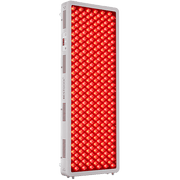








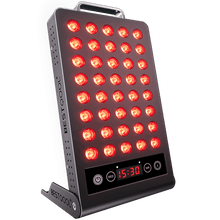
 Small
Small
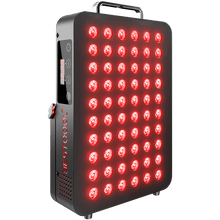
 Moderate
Moderate
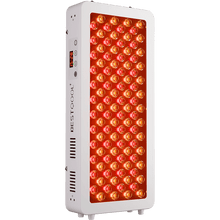
 Moderate
Moderate
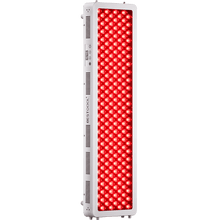
 Moderate
Moderate
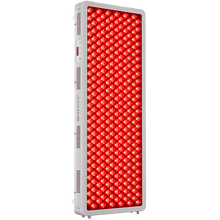
 Full
Full



